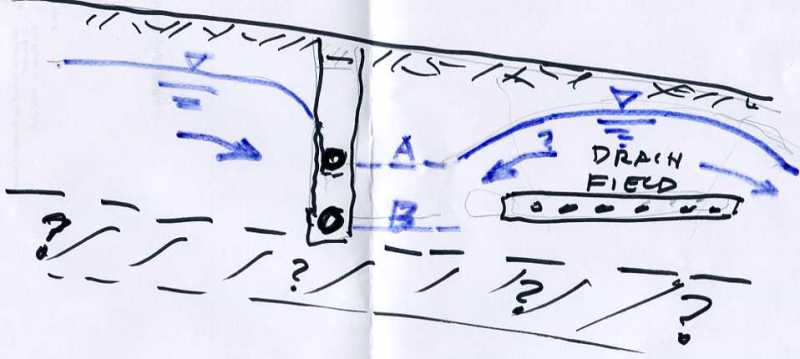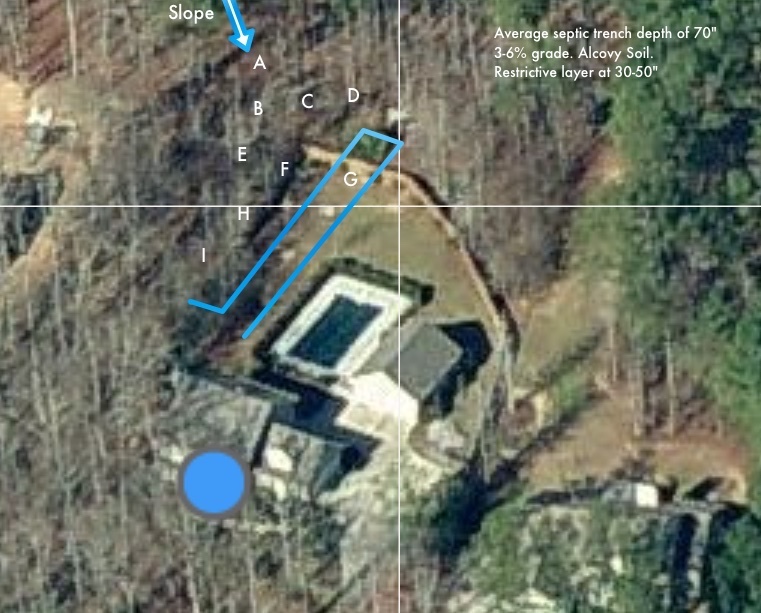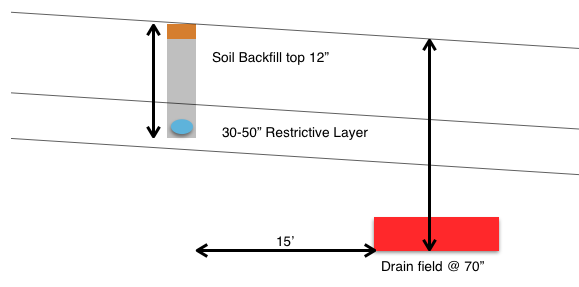mikefromgeorgia
New member
Gentlemen,
I am near Atlanta on a slightly sloping lot. A soil scientist reports that the area where my septic field is located is Alcovy with indications of a perched water table at 30-50". The septic field has an average depth of 70", which would make the deepest point around 80". The soil expert stated that this septic plan would no longer be approved, however since the septic functions well other than when we have heavy rain I may simply intercept the water before it flows into the septic.
I have found numerous references stating that to ensure I intercept the water, I should be below the depth of the field. The soil scientist agreed, much to my dismay as I would much rather only have to go down to 50". I have researched online for a few months and have read multiple threads on this forum discussing materials and techniques, but would greatly appreciate guidance to solidify my plan.
The plan is to use an excavator with a 12" bucket, starting at 90". Georgia requires a 15' offset from the septic field, so I'll comply with that. At this point I am planning on using 4" corrugated with slits, without a filter fabric, and granite sand up to about a foot from the surface. The total distance of drain will be 110 feet, and then the pipe will eventually daylight downhill.
Thoughts?
I am near Atlanta on a slightly sloping lot. A soil scientist reports that the area where my septic field is located is Alcovy with indications of a perched water table at 30-50". The septic field has an average depth of 70", which would make the deepest point around 80". The soil expert stated that this septic plan would no longer be approved, however since the septic functions well other than when we have heavy rain I may simply intercept the water before it flows into the septic.
I have found numerous references stating that to ensure I intercept the water, I should be below the depth of the field. The soil scientist agreed, much to my dismay as I would much rather only have to go down to 50". I have researched online for a few months and have read multiple threads on this forum discussing materials and techniques, but would greatly appreciate guidance to solidify my plan.
The plan is to use an excavator with a 12" bucket, starting at 90". Georgia requires a 15' offset from the septic field, so I'll comply with that. At this point I am planning on using 4" corrugated with slits, without a filter fabric, and granite sand up to about a foot from the surface. The total distance of drain will be 110 feet, and then the pipe will eventually daylight downhill.
Thoughts?



